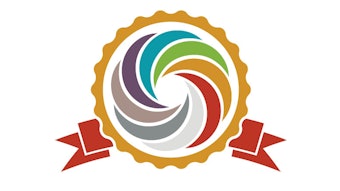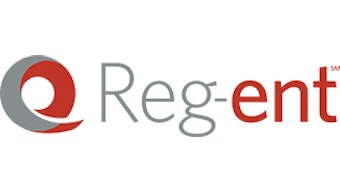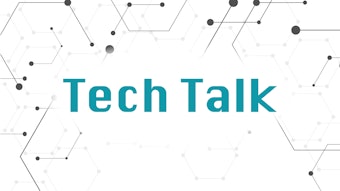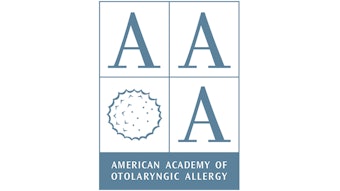How to Identify and Protect Yourself Against Predatory Journals
Members are always encouraged to collaborate and share your research, findings, and thought leadership with the otolaryngology specialty at large. You may even receive unsolicited invitations to submit your research to a new, open access journal or to join a new editorial board. Unfortunately, not all of these “opportunities” are legitimate and do not ultimately promote the science and practice of medicine.
Members are always encouraged to collaborate and share your research, findings, and thought leadership with the otolaryngology specialty at large. You may even receive unsolicited invitations to submit your research to a new, open access journal or to join a new editorial board. Unfortunately, not all of these “opportunities” are legitimate and do not ultimately promote the science and practice of medicine.

OTO Open is the official open access journal of the American Academy of Otolaryngology–Head and Neck Surgery Foundation. We invite submission of articles on topics pertaining to the science and art of medicine that help fulfill the journal’s mission of publishing contemporary, ethical, clinically relevant information in otolaryngology, head and neck surgery (ear, nose, throat, head, and neck disorders) that can be used by otolaryngologists, scientists, and clinicians to improve patient care and public health. Articles are published because of scientific merit and are not to be considered general practice standards. Learn more at https://journals.sagepub.com/home/opn.
The American Academy of Otolaryngology–Head and Neck Surgery Foundation has our own open access journal, OTO Open, and according to our publisher, SAGE Publishing, there are a number of benefits to working with open access journals, including:
Increased visibility—With content free to all—not just paying subscribers—anyone with internet access can view and download your research. This allows for broader and faster impact as well as enhanced collaboration. Studies have shown increased citations to open access content and science as a whole moves forward faster when access to research is not limited to those who can pay.
Increased access—Open access content is available to everyone, regardless of their financial situation.
Authors retain copyright—Most open access content is published under a Creative Commons or similar type of license, which allows the author to retain more control over their intellectual property including rights to distribute and reuse.
Meeting funder requirements—Increasingly, funders are making open access publishing a prerequisite for funding. Publishing in an open access journal easily fulfills funders’ requirements.1
Sounds Good. What’s the Problem?
SAGE goes on to explain that “predatory companies take advantage of the crowded open access environment to launch journals with highly questionable practices. Some predatory titles list entirely fabricated editorial boards on their websites. Others go further by listing real academics without their knowledge or consent. ‘Pay to Publish’ journals conduct little to no peer review and will accept any manuscript so long as the author is willing to pay a fee. Some predatory publishers even mimic existing, high quality peer-reviewed journals, down to the journal logo.”2
How Can I Identify Reputable, Worthwhile Journals?
A 2018 Otolaryngology–Head and Neck Surgery editorial written by a consortium of editors in chief of otolaryngology-related journals and titled “Open Access: Is There a Predator at the Door?” explains how you can recognize legitimate open access journals by looking for these features:
- A well-known editorial board of recognized experts in the field
- An International Standard Serial Number (ISSN)
- Listing in the Directory of Open Access Journals (DOAJ) at https://doaj.org
- Publisher membership in the Open Access Scholarly Publishers Association
- Affiliation with recognized societies
- Official website that provides complete contact information
- Publication fees that are clearly listed and are not submission fees3
On the other hand, the editors in chief say you should be cautious if:
- Invitations to submit research or to join editorial boards are overly flattering
- There is a guarantee of rapid publication
- The journals’ titles are very similar to those of legitimate journals, but are not established journals
- The journal website has no address or contact information
- The mission of the publisher and/or the journal is described in vague terms
- There is no mention of peer review or basic submission requirements
- Manuscripts are submitted by email rather than through the publisher’s online manuscript peer review system
- There is a requirement to submit a minimum number of articles per year, and there is no clear statement that your open access publication fee will be waived4
Another resource you can use to identify trusted journals and publishers for your research is called Think. Check. Submit. This international, cross-sector initiative employs a range of tools and practical resources to educate researchers, promote integrity, and build trust in credible research and publications.5
References:
- https://journalsblog.sagepub.com/blog/industrynews/oa/howtoprotectyourself
- https://journalsblog.sagepub.com/blog/industrynews/oa/howtoprotectyourself
- https://journals.sagepub.com/doi/full/10.1177/0194599817752131
- https://journals.sagepub.com/doi/full/10.1177/0194599817752131
- https://thinkchecksubmit.org/

























